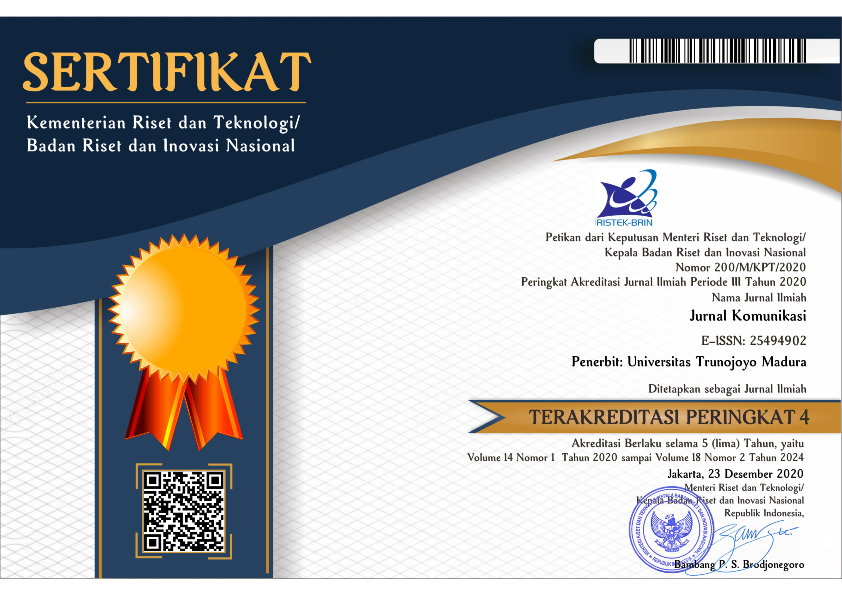Digital Culture and Individuals: (Analysis of the influence of digital culture on individuals)
Abstract
Keywords
Full Text:
PDFReferences
Cant, R. P., & Cooper, S. J. (2010). Simulation-based learning in nurse education: Systematic review. Journal of Advanced Nursing, 66(1), 3–15. https://doi.org/10.1111/j.1365-2648.2009.05240.x
Debord, G., Vague, T., & Cooper, S. (2012). Society Of The Spectacle. Bread and Circuses. https://books.google.co.id/books?id=yPhuCwAAQBAJ
Edirisinghe, C., Zhu, K., Ranasinghe, N., Khoo, E. T., Srivatsan, V. E., Wijesena, J. P., Fernando, O. N. N., & Cheok, A. D. (2011). Modeling literary culture through interactive digital media. Virtual Reality, 15(4), 239–247. https://doi.org/10.1007/s10055-009-0147-9
He, Z., & Zhu, J. H. (2002). The ecology of online newspapers: The case of china. Media, Culture and Society, 24(1), 121–137. https://doi.org/10.1177/016344370202400108
Holmes, D. (2005). Communication theory: Media, technology and society. Sage.
Katz, E. (1997). Birth of Digitsl Nation. https://www.wired.com/1997/04/netizen-3/
Kerckhove, D. de. (1997). Connected intelligence.
Popova, L. (2012). The Extended Parallel Process Model: Illuminating the Gaps in Research. Health Education and Behavior, 39(4), 455–473. https://doi.org/10.1177/1090198111418108
Poster, M. (1995). The Second Media Age. London: Polity.
Sparks, C. (1998). Is there a global public sphere. Electronic Empires: Global Media and Local Resistance, 108–124.
DOI: https://doi.org/10.21107/ilkom.v17i1.19458
Refbacks
- There are currently no refbacks.
Copyright (c) 2023 Ruli Aprilia

This work is licensed under a Creative Commons Attribution-ShareAlike 4.0 International License.
Jurnal Komunikasi by Universitas Trunojoyo Madura is licensed under a Creative Commons Attribution-ShareAlike 4.0 International License.















